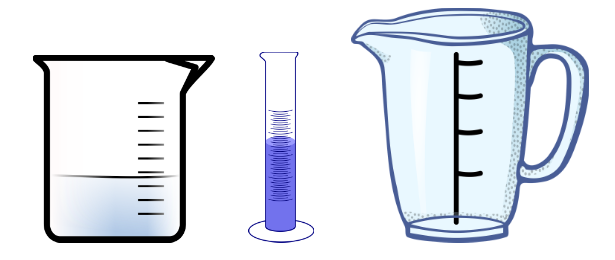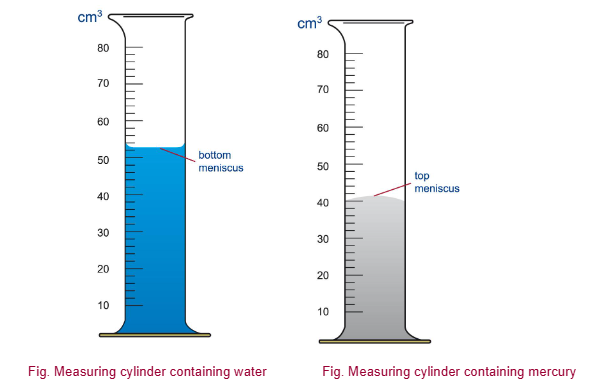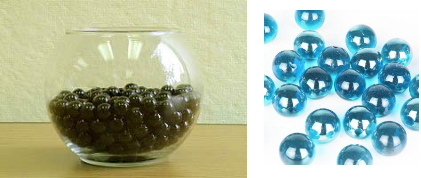1.5 Measurement of Volume
A measuring cylinder and a beaker are mainly used to measure the volume of a liquid. The scale on a cylinder is marked in centimetres and millilitres. The standard unit for measuring the volume of a liquid is litres, which is denoted by L.
1 litre = 1000 ml
1 ml = 1 cm3
While reading a cylinder’s scale, you should notice the following precautions to avoid errors.

Precautions
- The cylinder must be placed horizontally on a flat surface; otherwise, tilting may cause an error.
- The volume of most of the liquids, including water, is measured from the bottom of the meniscus because it is curved downwards.
- Mercury is an exceptional case; the meniscus of mercury is curved upwards, so the volume of mercury is read from the top of the meniscus
- The line of sight and your eye should be at right angles to the scale of the cylinder to avoid the error that might be caused due to parallax.
- If the surface of the liquid is not precisely with the line of the scale, estimate the closest volume of the liquid.

The displacement method can be used in the laboratory to determine the volume of a glass marble or bead. The average method can be used to calculate the volume of a single marble.

